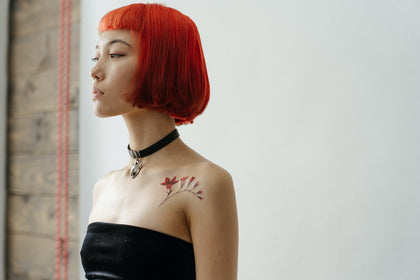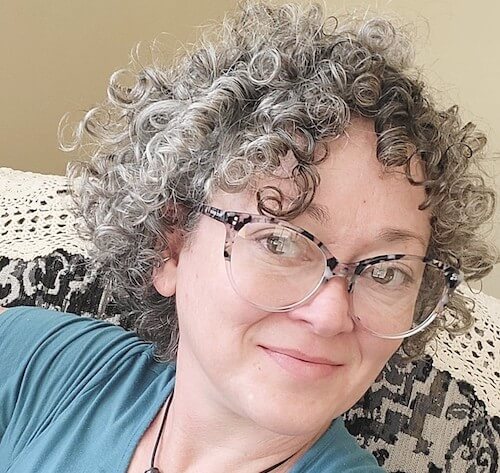Most hair color is not designed to be applied to or processed on wet hair. Even damp hair can contain enough water to interfere with the coloring process or make your hair more vulnerable to damage. This means a less-than-pleasing result in terms of hair integrity and how long the new shade will last on your hair.
VEGAMOUR spoke with a hair expert on what happens when you dye wet hair. Plus, find out what hair care products can help your dyed hair look and feel its very best.
What Happens When You Use Hair Dye on Wet Hair?
Different hair dyes have different instructions for application, including whether they are designed to work on wet or dry hair. But many people forego these instructions even though they are very important. Most hair dyes are designed for dry hair application only. Here's what happens when you use hair dye on wet hair.
The Water Acts as a Diluting Agent
VEGAMOUR spoke with Madison Dufour of The Exquisite Find Hair Blog about why you should not dye wet hair — especially when the hair dye's instructions say to apply it to dry hair.
Dufour said that although hair can be dyed while it's wet, it's not as effective as applying the dye to dry hair. She said part of the reason hair dye is less effective on wet hair is that water acts as a diluting agent on your hair strands.
Dufour explained that your hair is like a sponge, and if it soaks up water, there won’t be any more room to soak up the hair dye. Applying hair dye to wet hair can create an uneven application of the dye and a less rich and vibrant color result in the end. But dilution isn't the only issue when doing a dye treatment on wet or damp hair.
Water Molecules Prevent Color Pigments From Attaching
Another reason not to dye hair wet is that water molecules get in the way of pigments that need to attach to or pass through hair cuticles. Pigments attach better and can penetrate deeper to produce more lasting results when applied to dry hair.
Hair pigments are tiny molecules that work to color your hair. They may or may not require hydrogen peroxide to catalyze their actions. There are two types of pigments.
- Direct dye pigments - Attaches to the outside of the hair strand
- Indirect pigments - Require hair cuticles to be open so they can enter the hair. Then, these pigments swell to fully form and remain in the hair's cortex. Hydrogen peroxide is necessary.
Different types of hair color have these tiny dye pigments, which may not work correctly if you dye your hair when it's wet.
Here's a rundown of the types of hair coloring methods and the types of dye pigments they contain.
- Hair bleach - Reduces (destroys) color pigments in the hair to make space for new hair color molecules to be deposited
- Permanent hair dye - May contain both direct and indirect dye pigments
- Demi-permanent color - Lasts four to eight weeks and largely is made up of direct dye pigments
- Semi-permanent color - Lasts a few weeks and is made up of direct dye pigments
- Temporary color dyes - Lasts until you wash your hair and is made up of direct dye pigments
Related: Make Your Hair Color Last Longer With These 6 Simple Steps
Water Raises the pH of Your Hair
Another issue that occurs when you use dye on wet hair is that the pH of your hair increases. Your hair is naturally acidic with a pH of around 4.5, and the addition of water means that the hair color or box dye isn't applied to the pH of your hair, as intended, but to the pH of hair + water. Increasing the pH and chemical composition of your hair dye can negatively impact your hair's health.
Note: It is strongly advised never to try bleaching wet hair. Even if the hair is freshly washed or rinsed, take the time to dry it completely for even, safe results. For the best results of any hair coloring treatment, mix the color as directed and apply it to wet or dry hair per the brand instructions.
What Happens if You Dye Your Hair Wet Anyway?
If the directions on your hair color do not say for you to dye your hair wet and you apply the color to partially wet or completely wet hair, you may experience the following:
- Less vibrant hair color
- The appearance of an uneven application
- Increased hair porosity or dryness
- Stressed cuticle
One other thing that baffles the non-colorist is when hair colors do not perform as they are expected to, which can happen when water molecules raise the pH of color solutions. Most color molecules are designed to work on dry hair but not on water molecules, so essentially, you are changing the chemistry of your color application and the following can happen:
- Permanent dyes perform like demi-permanent ones.
- Demi-permanent dyes perform like semi-permanent dyes.
- Semi-permanent color washes out as fast as temporary dyes.
In other words, you likely won't get the hair color results you're looking for.
When Can You Dye Wet Hair?
The best practice for dyeing your hair is to follow the directions that are included with the particular hair dye product you are using. Hair dye that's recommended for application to wet hair is more common for temporary color formulas, semi-permanent colors and occasionally demi-permanent colors. However, wet application is rarely recommended for permanent colors.
Occasionally, you can bend the rules and dye wet hair. Here are some potential examples.
- If you are a practicing professional hair colorist who understands the molecular workings of all types of hair color — permanent to demi-permanent, semi-permanent to temporary — as well hair composition and structure.
- After hair lifts with bleach and other temporary dyes are used as toners. Note that some of these require the hair to be damp.
- Your look requires precise application on wet hair for wet balayage or other techniques.
- If your colorist intentionally wets some areas of the hair for subtle dimension or a subtle change in a targeted area of the hair shaft (roots, mid-shafts or ends).
Caring for Dyed Hair
Some shampoo strips the color from your hair. Using the right hair care products will also protect your investment as well as your hair's health. The best after-color care for your hair will:
- Maintain hair strength and integrity
- Balance your natural oils (Your hair's natural oil plays a role in keeping your hair moisturized.)
- Protect your hair from free radicals and other damaging molecules
- Create the perfect scalp biome for healthy hair
We recommend GRO Revitalizing Shampoo and Conditioner Kit — a plant-based cleansing and conditioning duo that provides molecular support and superior hydration.
You can also deep condition with color-safe HYDR-8 Deep Moisture Repair Mask once or twice a week. Rinse with lukewarm or cool water and style as usual.
Dyeing Wet Hair is Usually a Don't
No matter what kind of color you use — permanent colors or semi-permanent dyes (etc.) — an even application on dry hair will allow the hair cuticles to open properly and accept the hair dyes as they were designed to work. The only time you should apply hair dye to wet hair is if you are following the specific directions on the hair dye product you are using.
Take care of your dyed hair with VEGAMOUR's best-selling shampoos & conditioners. All of our products are color-safe and formulated without phthalates, silicones, GMOs, parabens, sulfates, mineral oils and gluten. With regular use of these plant-based, nourishing formulas, you'll be on your way to your best hair days yet!
#include-related-slider#
More From VEGAMOUR
Photo credit: Cottonbro Studio/Pexels





















